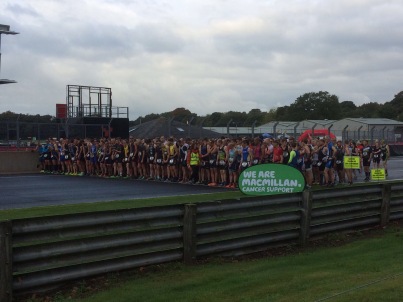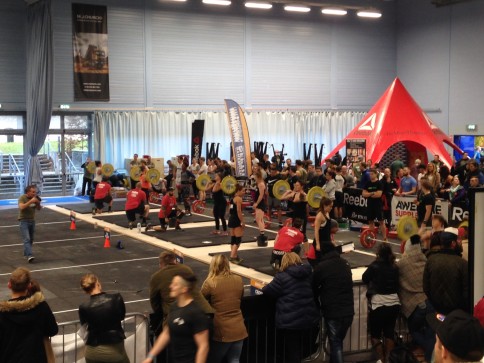So, latest running news is that I now have a coach (more about that in another post), my race today was cancelled BUT I am running THE READING HALF (which is quite soon, as the 18th March has snuck up) However, my ultimate A race is the European Duathlon Champs in October. Yes, October is quite a long way away. And yes, the word “European” is scary. Hence the coach.
Therefore, the Reading Half is in my diary, but not necessarily a goal, go for glory, set a new PB race. My current PB is an OK-ish 97 minutes, set in Watford a few years ago. If you know Watford at all, you will know that Watford is NOT FLAT. So much more to be done in comparison to the rest of my distances…
So why I hear you say, are you not going to go all out for a PB at a lovely, fairly flat (and fast) Reading?
Perfectly good question. It just isn’t my goal this year, and I didn’t really fancy a whole load of miles early in the year (this is also why I am not using my deferred marathon place this year)
My current schedule looks something like this (although clearly skiing gets in the way here!) – so we’ve got easy doubles, shorter speedwork and quite a lot of turbo. But not a huge amount of leg mileage 😬 (or any long tempo!) You’ll be happy to know that the next two weeks pre-half marathon include at least 3 double days (run and cycle), so I can’t really say I am tapering…
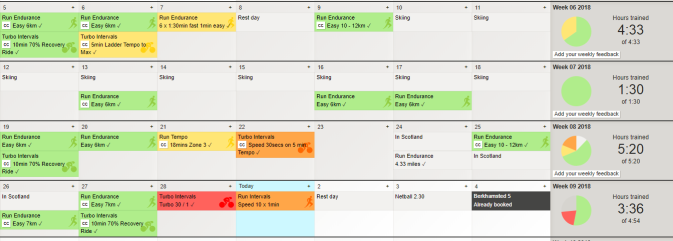
I don’t know the race plan yet, but will probably just do it as a long run. Or maybe a “just go out and see how you get on” strategy (I doubt this, I think we all know this would mean I go out far too fast and blow up)
I would not advocate following my training plan/approach if you are going for a PB at the half. Nor if it’s your first half. I’ve got a fair few years of running experience and decent fitness under my belt, meaning that I know that, 99% of the time, I can get round a half even if I haven’t done a huge amount of miles. Anyway, enough of the preamble. I am currently doing a lot more easy running that I used to, and the majority of this is not dictated by pace. Instead, I have now become very good friends with my heart rate monitor (yay)
So, here are some things I have learnt about easy runs and using a heart rate monitor to actually make them easy.
1. OMG IT IS SO NICE NOT TO HAVE “THE HARD SESH” dread. I can wake up, safe in the knowledge that I don’t have to run very hard or fast and just pootle along and it is lovely. And I don’t have to watch the Garmin (as much – see point 4)
2. It means you can run easy depending on how you feel that day. I have quickly learnt that your heart race can increase due to lots of things. The cold. Being hungover (oops). Being tired. Being busy at work. But if you’re trying to always hit the same pace, these can make a session pretty horrible. By using HR, it’s a slightly better representation of your fitness on that specific day.
3. You have another marker to compare progress. You know how sometimes runs just “feel easier” but you aren’t really sure if they were? Well, having your heart rate recorded means you’ve got a different metric to look at than just pace. If you’re running the exact same pace for a loop as you were 3 months ago, but your average HR is 10 BPM slower well, good stuff, you’ve probably made an improvement!
4. Uh oh, the HR screen becomes equally as compelling as the pace screen. I would love to say “using HR means you rely less on your Garmin” but that would be a lie. I watch it like a hawk and delight in making it go lower.
5. Sometimes you will swear at the heart rate screen because NO MATTER HOW SLOW YOU RUN IT WON’T GO DOWN. Especially if your interval session is based on HR. I swear my legs don’t actually move that slowly.
6. Hills will be avoided for fear of increasing the average heart race. I live at the top of a hill. In winter, I have to run down it to get to the majority of street lights. This means I have to run back up it (it’s basically nearly a mile uphill) at the end. It’s really hard to keep your HR low running up a hill.
7. You will try to get your heart rate as low as possible. It becomes a super fun challenge (debatable use of the word ‘fun’ here)
8. Deep breathing doesn’t necessarily make your heart rate any slower. Sorry. You can keep trying though!
9. I guarantee that “easy” is actually much slower than you think easy is. My own easy pace is not 8 minute miles. It’s anywhere between 8.30 and 9.30. It took time to learn that. Look at any of the elite runners and their “easy” sessions – and you’ll see what I mean! Easy means well, just that. You should feel like you could continue on forever.
10. Which leads into my main point – easy running is incredibly good for you as part of your training plan. Too much higher intensity work and impact means you don’t fully recover or get the benefit of the rest of your training – roughly 70% of your week should be easy. There are plenty of articles about the benefits and how to define easy. Google and running resources are your friend.
So there you go – I fully advocate trying out some HR training and keeping an eye on your definition of easy. And HR training isn’t just for easy running either, I’ve started using it for my speed work as well, which means I’m less worried about inclines impacting my overall pace. Monitors are generally quite inexpensive and often come part and parcel of your GPS watch. I spent a good 8 years never really using my heart rate monitor (!) and it’s now a key part of my training set up.
Unfortunately, entries are now closed for Reading so no more opportunities to get involved, but I promise you a full debrief post race. (and maybe some mid-race insta stories if I’m running it easy…)
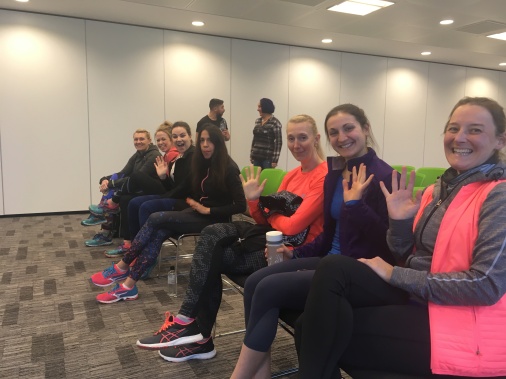
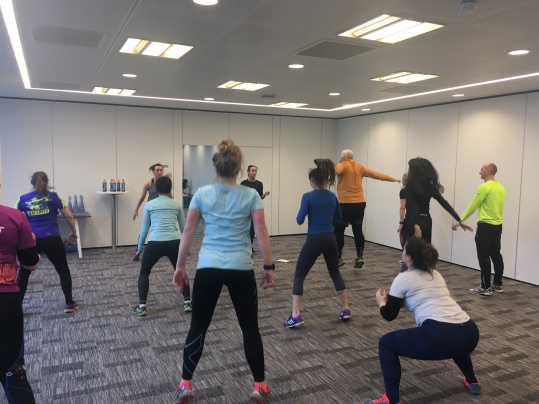











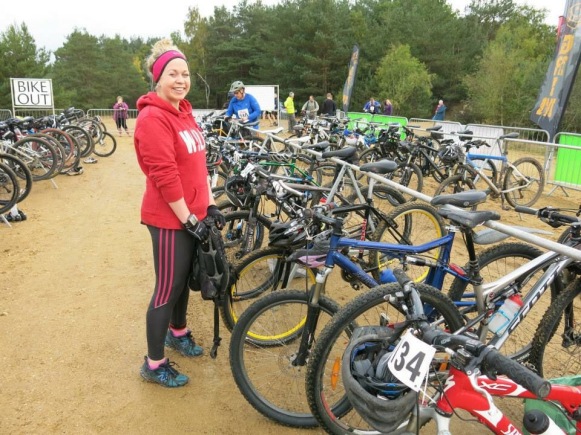
 My duathlon career then continued into 2015 (also the year of
My duathlon career then continued into 2015 (also the year of 